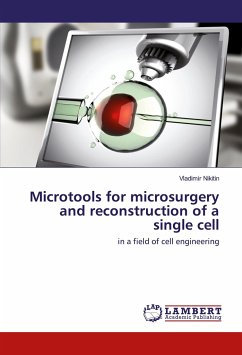Manipulations with a living cell require various microtools for each task. The principles of making microtools with the help of microforge were first described in monograph of P. de Fonbrune, "Technique de micromanipulation", 1949. The represented book is the first one that gives the full description of all microforges known now and shows additional ways of operating on them, not being used before, regardless of microforge origin. Author's experience in microsurgical cloning of animals has shown the need for creation new microtools which cannot be bought and has led to creation of improved new microforge. There is represented a wide range of microtools designed by the author: dozens of types of microscalpels, micropipettes, various microhooks, microneedles, etc. As well an extensive background material on the composition and properties of various glass grades is included. The book may serve as a manual for teaching of making microtools on one's own. It will be useful for a wide range of researchers, postgraduates, engineers and other professionals who daily work with a living cell.








